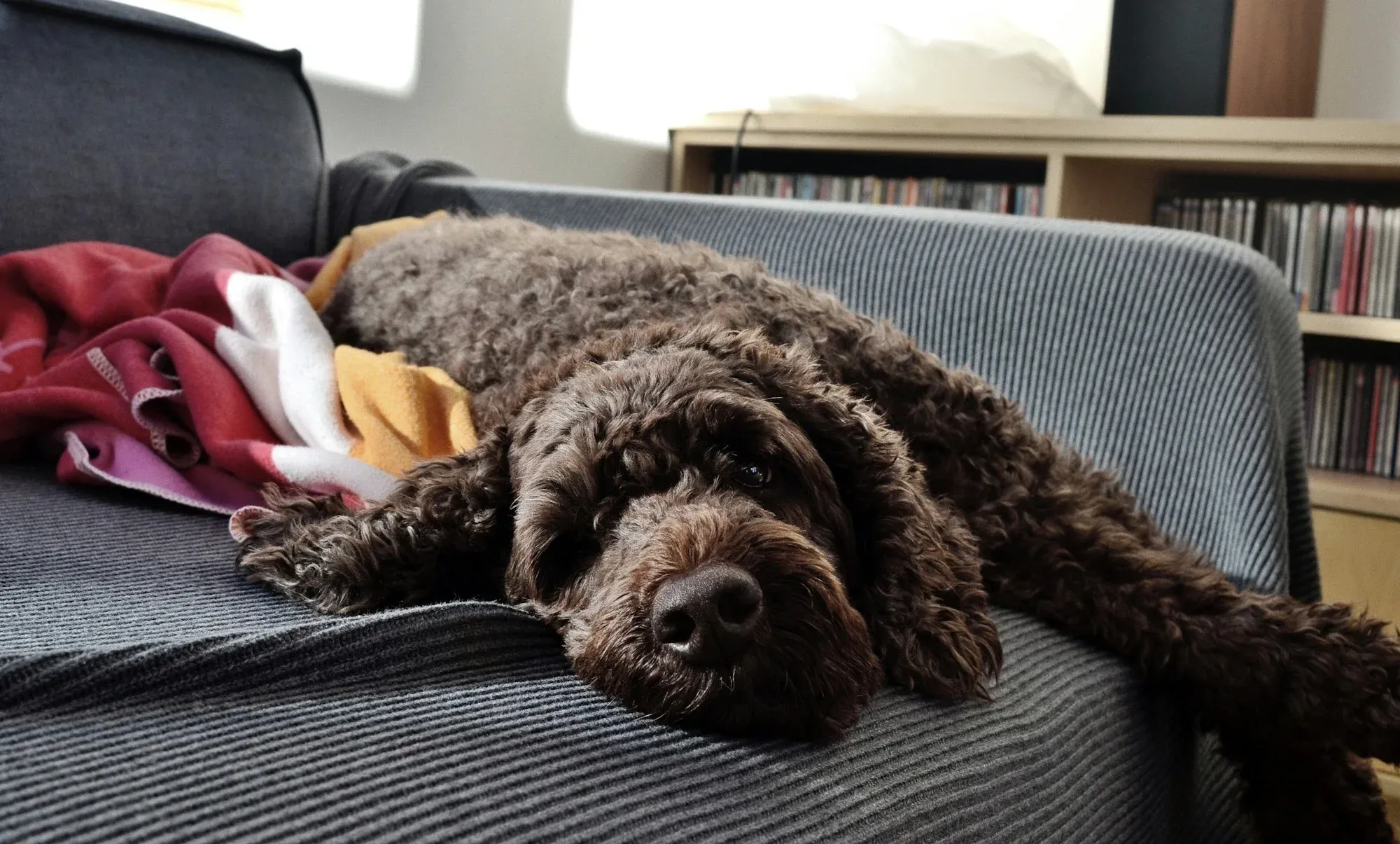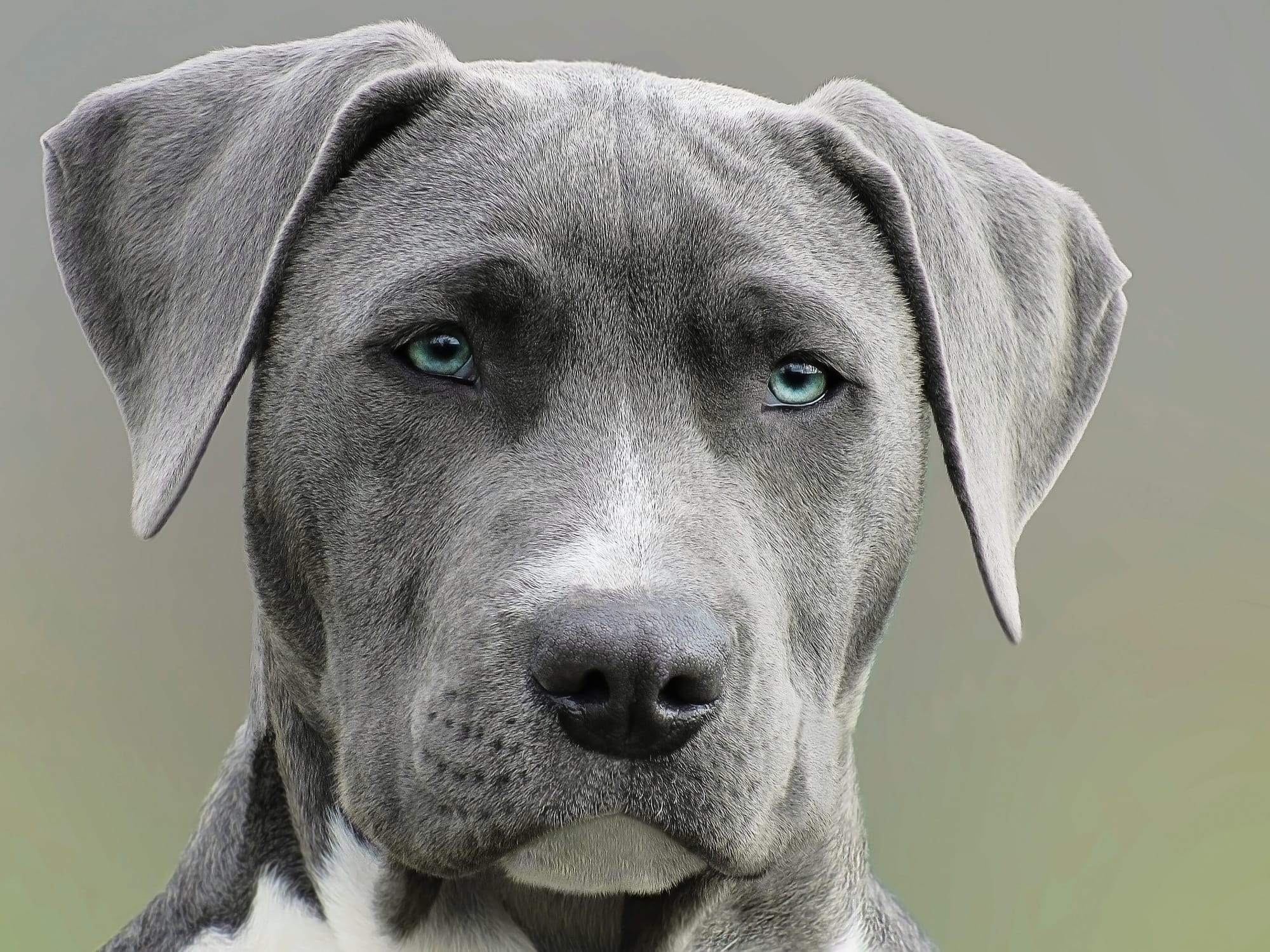So, you're thinking of getting a Pitbull, but you've heard they aren't good for kids. Or maybe you're considering the idea of getting a canine and trying to figure out a pitbull's temperament with kids.
Today, this article will tackle misconceptions about pitbulls and children and then give some tips on how to keep your family safe when bringing a new dog home.
Are Pitbulls Good with Kids?
Yes! Pitbulls can make excellent family pets when they're properly trained. Their loyalty and affectionate nature make them wonderful companions for children- suppose you learn how to raise a pit bull puppy, that is. In fact, this breed used to be called "nanny dogs" due to their gentle and protective nature around kids.
Pitbulls are strong and energetic dogs that need a lot of exercise. Therefore, it's important to supervise interactions between them and children—particularly young ones.
It is important to teach children how to interact safely with dogs—for example, by not pulling their tails or ears and avoiding approaching them while eating or sleeping.
Pitbulls won't all have the same personality. Some are calmer, others are more active and excitable. Suppose you want a dog that is compatible with your lifestyle, it is best to interact with the animal before adopting or buying it.
Is a Pitbull Naturally Aggressive?
There are several answers depending on what one has experienced. Myths about pitbulls and their behavior are many. However, the truth is that they're not inherently aggressive dogs. They can take care of children, the elderly, and other animals if given the chance.

Why Are People Scared Of Pitbulls?
Many people fear pitbull for the following reasons:
The media portrays pitbulls as inherently aggressive and dangerous dogs. These dogs were used for dogfighting and associated with criminal activity. This perpetuates negative stereotypes about the breed. Consequently, many developed a fear of pit bulls and other bully breeds.
Their physical appearance. This breed is a muscular dog with a broad head and powerful jaw. Thus, it can intimidate people they are not used to.
Another reason is some may have had a negative experience with a pitbull. It might have resulted in fear of all dogs or a specific breed. Therefore, the fear can be challenging to overcome without proper education and exposure to well-behaved dogs.
So, it is essential to note that fear of a specific breed is not justified. Thus, you need to understand that each dog is an individual with unique behaviors and personalities.
History and Pitbulls Appearance
The origins of the pitbull are traced back to the 19th century in England when the breed was created for blood sports like bull-baiting and bear-baiting. These sports involve releasing a bull or a bear into an arena, and dogs attack and hold onto the animal until it is killed. The pitbull's muscular build and jaw made it well-suited for these violent sports.
However, when blood sports were banned in the mid-1800s, pitbulls were then bred for dogfighting. This was considered a more "humane" alternative to bull and bear-baiting.
When pitbulls were brought to the United States, they became popular working dogs and loyal family pets. Despite that, dogfighting continued to be a popular underground activity, and pitbulls were used.
Today, pitbulls are still associated with dogfighting and other criminal activities. This leads to negative stereotypes and breed-specific legislation in some areas.
However, pitbull are child-friendly, are loved family pets, and excel in therapy work and other service roles. With responsible ownership, these dogs can be loving and loyal companions.
Pitbull Appearance
Pitbulls are medium-sized dogs weighing between 30 to 70 pounds and are 18 to 22 inches tall. They are muscular with a broad chest and a strong jaw.
The dogs have short, glossy coats with many colors, such as black, brown, brindle, fawn, and white. They usually require little grooming because of their short coats.
There have been some pitbulls that have been born with a gene that allows them to have long hair.
Their ears are small and floppy, while their eyes are almond-shaped and dark-colored. However, some owners opt to have their pets undergo surgery to crop the ears. Therefore, their ears stand up rather than hanging down naturally.

How to Introduce a Pitbull to Kids
Introducing a pitbull to kids is a positive experience; however, it's vital to take some precautions for everyone's safety.
Below are some tips to consider:
Things to Watch Out for in Pitbulls:
- Signs of aggression. Be aware of aggression signs like growling, baring teeth, or stiff body language. In case you notice any of these, remove the pitbull from the situation immediately.
- Over-excitement. Pitbulls can get over-excited and jump up on kids or play too rough. So, watch for that and redirect the pitbull's behavior if necessary.
- Fear. Some pitbulls may be afraid of kids leading to defensive behavior. In case you notice those signs of fear or anxiety, give the dog space and let it approach the kids on its own terms.
Things to Consider:
- The age and temperament of the kids: Children may not know how to interact with dogs. Therefore, supervise closely and teach them how to approach the pitbull.
- The pitbull's history: Suppose the dog has a history of aggression or has been mistreated; it may not be suitable for interaction with kids.
- Your comfort level: In case, you're not comfortable with the pitbull interacting with kids, it's okay to separate them. Always prioritize safety over socialization.
- Start with a calm/controlled environment: Consider selecting a quiet and familiar space where the dog can meet the kids without distractions or loud noises.
- Teach the kids how to approach the dog: Show them how to approach the pitbull slowly and calmly (with hands at their sides):
- Provide the pitbull with space: Make sure the dog has a way to retreat if it feels uncomfortable or overwhelmed.
- Consider rewarding positive behavior: Praise the dog and give it treats for calm and friendly behavior around the kids.
- Set boundaries: Teach the kids to respect the dog's boundaries and not pull on its tail or ears or climb on it.
Why Do Pitbulls Make Great Pets?
There are many reasons why dogs make great pets. They include the following:
- Loyal and affectionate. They're known for their loyalty and affection towards their owners.
- Intelligent. Pitbulls are highly trainable and intelligent dogs. They learn commands quickly and love to please their owners.
- Protective. Dogs have a natural protective instinct towards their families. They will go to great lengths to protect their loved ones.
- Energetic. Pitbulls are energetic dogs that love to play and exercise. Thus, fits owners with families.
- Good with children. After having proper training and socialization, pitbulls are great with children forming an unbreakable bond.
- Low maintenance. These dogs have short hair and require minimal grooming. They're also healthy and have a long lifespan.
- Affordability. Pitbulls are available for adoption at local shelters and rescue organizations. It makes them an affordable option for people looking to add a pitbull family dog.

How to Train a Pitbull
Training a pit bull can be a rewarding experience for the dog and the owner. Here are a few tips to help you get started.
- Start early. Begin training your dog at a tender age. The earlier you start, the easier it will be to establish good characteristics and prevent awful traits.
- Use positive reinforcement. This is the best way to train a pit bull. Reward good behavior with treats, praise, and affection. However, avoid punishing bad behavior, as this can be counterproductive.
- Consider socializing with your pitbull. Socialization is vital for all dogs, especially for pitbulls. Expose your dog to different people, animals, and environments to aid them in becoming well-adjusted and confident.
- Teach basic commands. Start with basic commands, for instance, sit, stay, come, and down. Use a clear, firm tone and reward your pitbull when they obey.
- Be consistent. Consistency is key when training a pit bull. Use the same commands and reward system every time. Also, be patient as your pitbull learns.
- Consider professional training. Suppose you're having trouble training your dog or want to work on more advanced commands, then consider working with an expert dog trainer.
Bottom Line
Pitbulls make great pets for those willing to put in the time and effort to train them. They are loyal, affectionate, intelligent, and protective. Therefore, they are great companions for families and individuals.
Training a pitbull is vital to start early, using positive reinforcement and socializing them, among others,
In addition to the training tips mentioned above, technology is a helpful tool for dog owners. Our Fi Dog Collar can aid in dog training and safety. The Fi Dog Collar Smart is a GPS-enabled collar that allows you to track your dog's location in real time. It alerts you if your dog leaves a designated safe zone. Therefore, you can be sure that your dog is always safe and accounted for.
For more helpful articles about pet-parenting tips, check out the Off Leash blog at TryFi.com.
Want to know more about TryFi.com? The Fi Dog Collar is a GPS tracking collar that not only keeps track of your dog’s location, activity levels, and sleep patterns, but it also alerts you if your dog escapes your backyard. This is the fastest way to find your dog after an escape. Try the Fi Dog Collar today!

